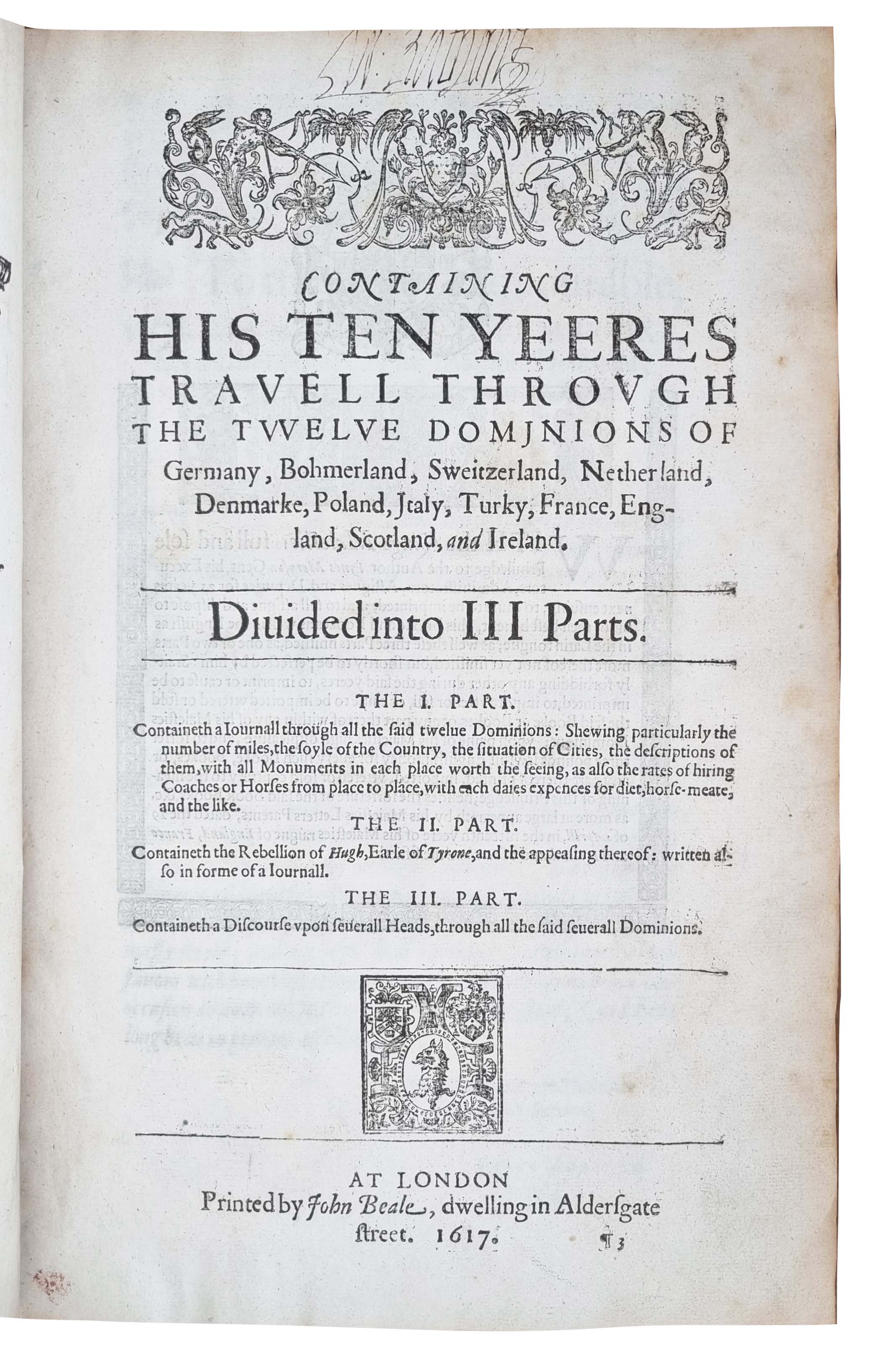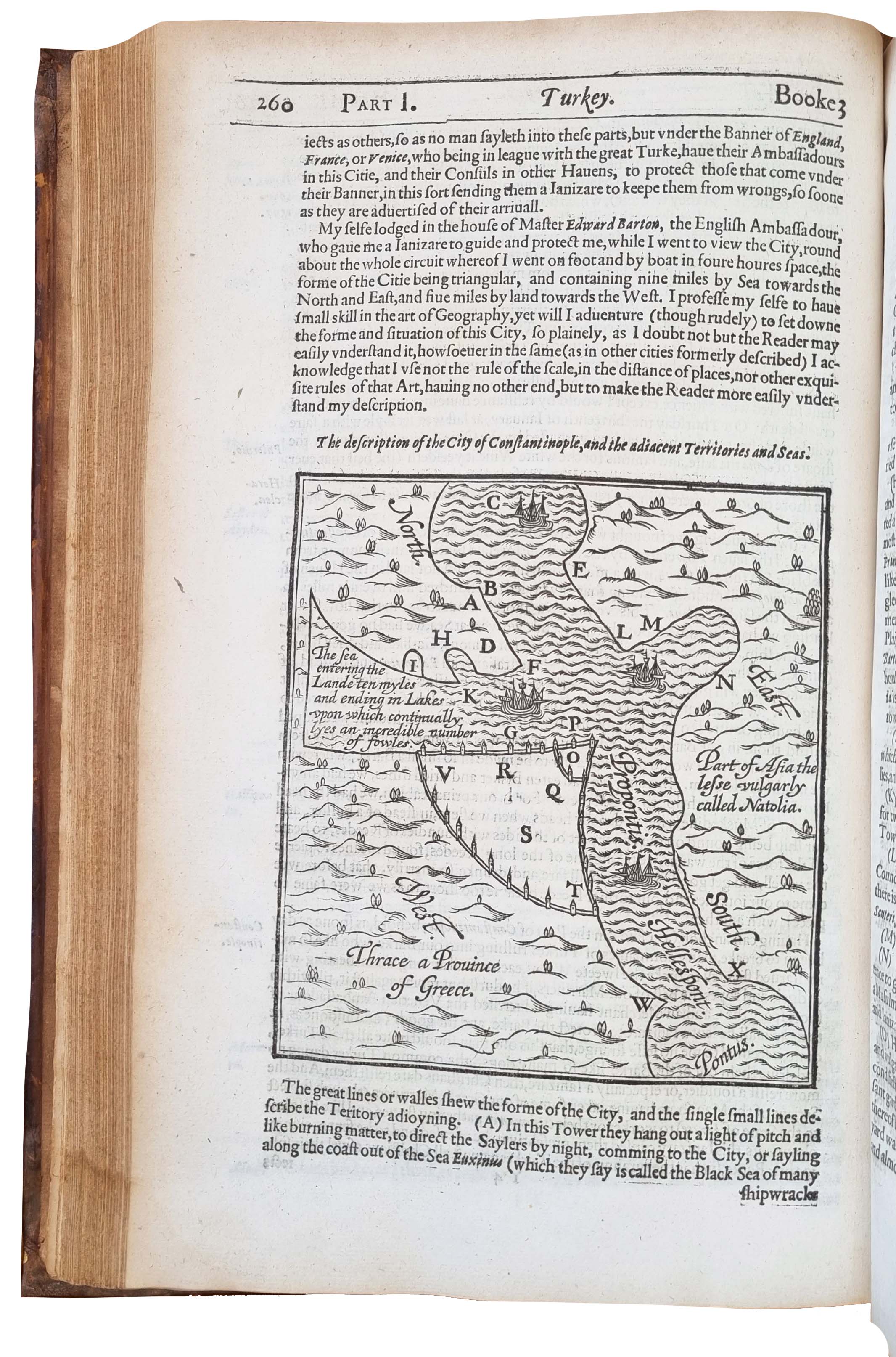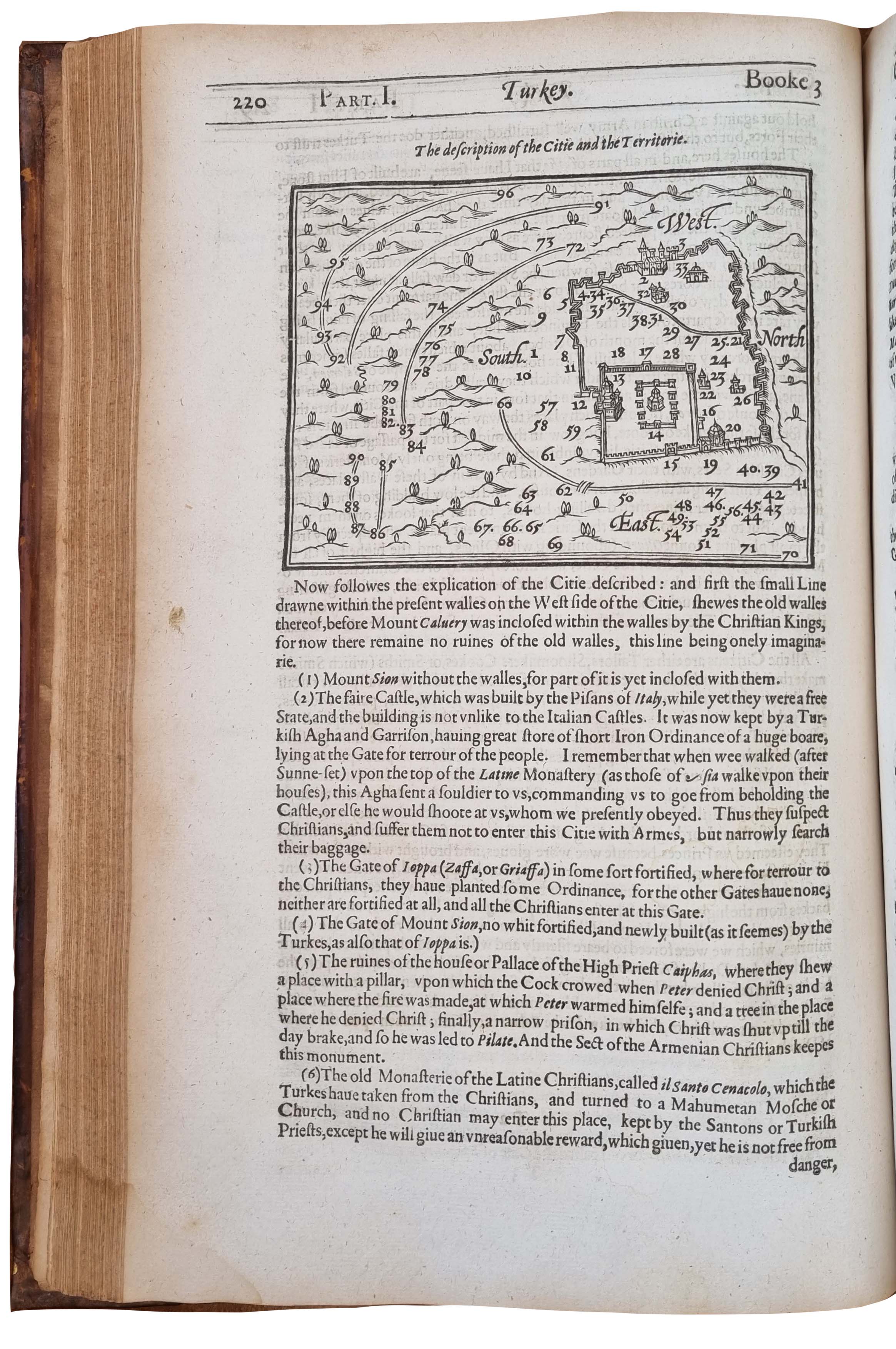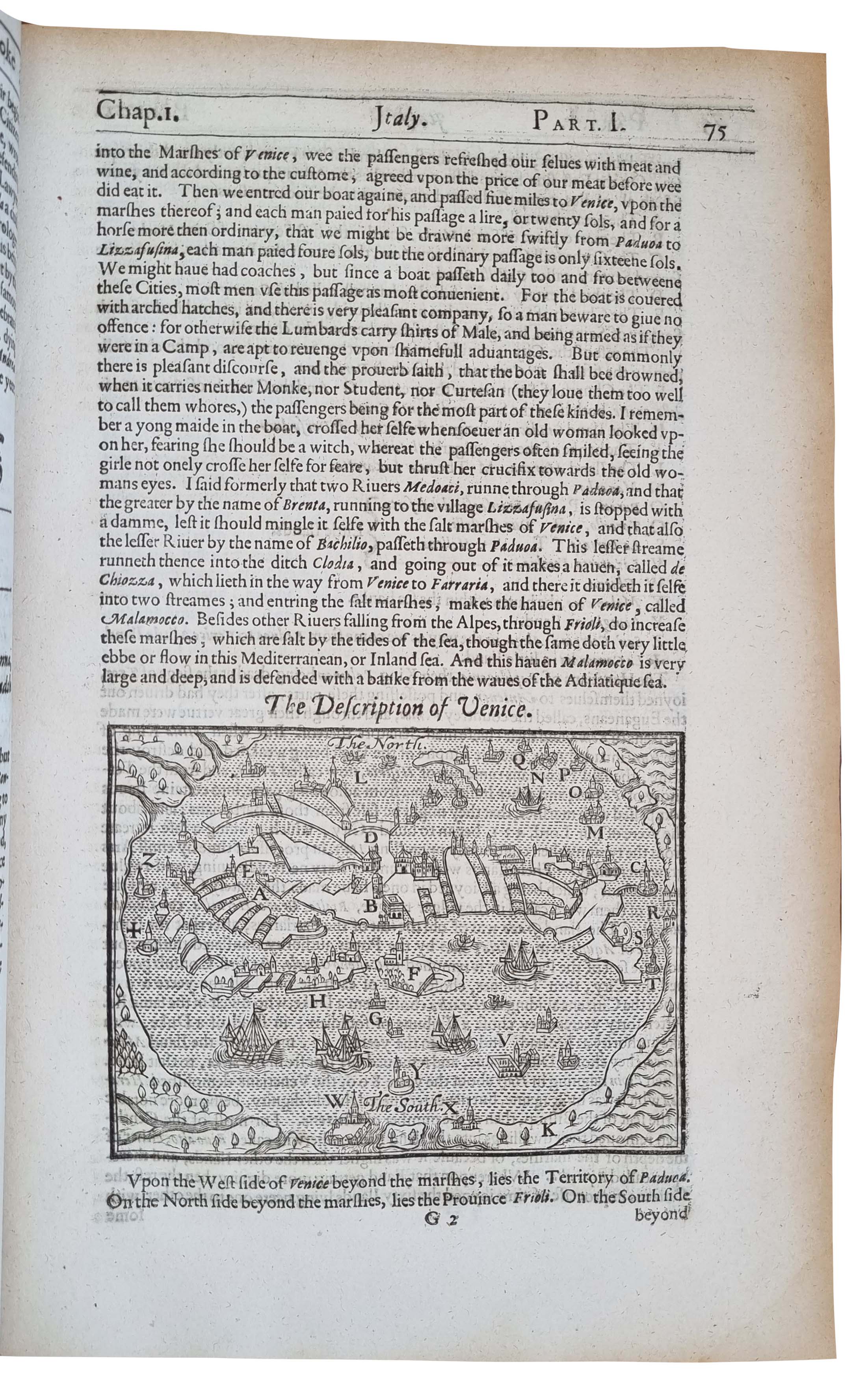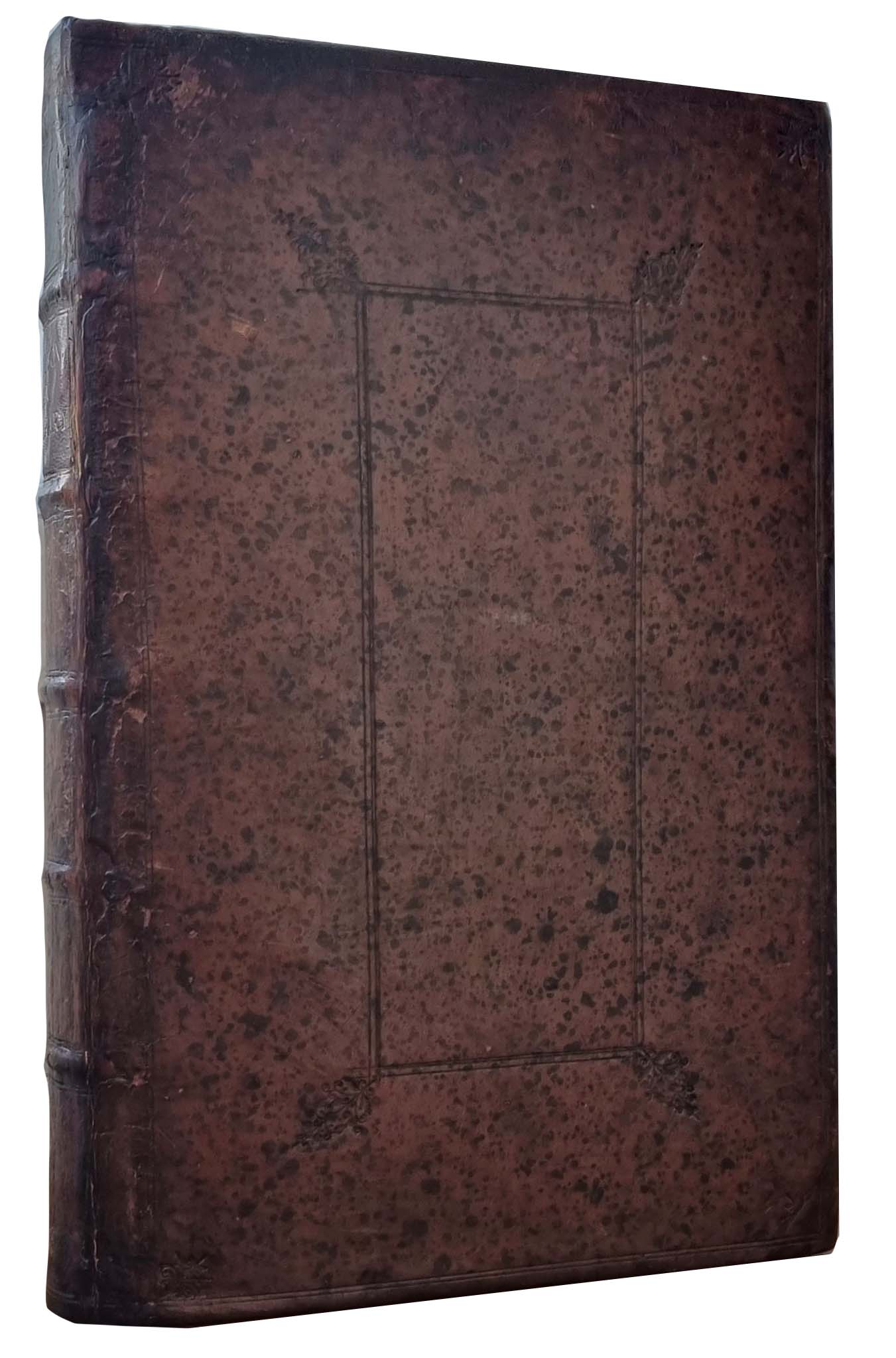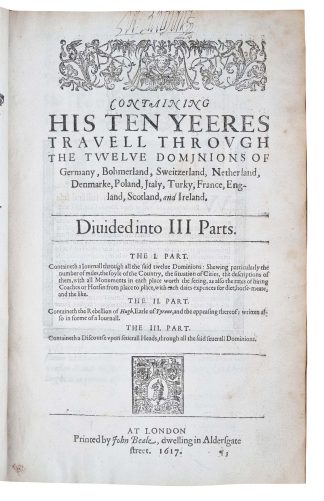MORYSON, Fynes.
FAMOUS TRAVELOGUE
An Itinerary.
London, John Beale, 1617.£7,500.00
FIRST EDITION. Folio. pp. [16], 301, 292, [2], first blank except signature, last blank. Roman letter. Woodcut border and vignette to frontispiece printed title, with woodcut royal arms, James I enthroned, armorial charges, 1/2-page woodcut bird’s-eye views or maps of Venice, Naples, Rome, Genoa, Paris, Jerusalem, Christ’s Sepulchre and Constantinople, full-page table of currency conversion rates, decorated initials and ornaments. Slight age browning, light water stain to lower outer blank corners. A very good, clean copy in near contemporary speckled calf, double blind ruled, central panel triple blind ruled, blind-stamped fleurons to corners, rebacked, spine remounted, gilt-lettered morocco label. Engraved armorial bookplate of Edward Conyers of Walthamstow (Franks 6667) and C19 label ‘Ex Bibliotheca Abbatiae S Gregorii Magni de Downside’ to front pastedown, C20 ink bibliographical note, shelfmark and ink stamp of Downside Abbey Library at foot of frontispiece, early autograph ‘W Rathbone’(?) to title, the odd early ms note.
A very good, clean copy of the first edition of this most influential English travelogue, with charming woodcut maps – a mine of information on Europe and the Middle East c.1600. Fynes Moryson (1566-1630) spent 8 years in the 1590s travelling in Europe and along the Mediterranean coasts. Upon returning to England in 1600, he was appointed secretary to Lord Mountjoy, whom he followed to Ireland to curb Tyrone’s Rebellion. ‘Itinerary’ gathers his own personal accounts of these travels; a fourth part was produced in ms but remained unpublished to 1903. ‘Throughout his travels, Moryson shows a protean ability to traverse conventional boundaries and markers of identity, […] a talent for dissimulation that he recommends for aspiring travellers’ (Netzloff, p.61).
Part I provides accounts of his travels in Germany, Switzerland and the Low Countries – where he returned after visiting France (Part III) – as well as Denmark and Poland. Part II begins with his arrival into Padua, and a most interesting note on ‘plague passes’. From Padua, Moryson went to Arquà, to see Petrarch’s house and tomb; Venice in 1594, of which he provides copious descriptions; he then moved to Milan and Cremona. He continued along the Adriatic coast to Rimini and Ancona, then Rome and Naples, which are thoroughly described and illustrated. The last chapter recounts his travels in Turkey and the Middle East, including the Holy Land, with a map and detailed account of Constantinople and Christ’s Sepulchre. This section includes interesting observations on Turkish customs, Christian (especially Greek) and Jewish communities he met there and their status within the Ottoman empire, and the demeanour a Christian traveller should adopt in Muslim countries.
There are also a few sections on England and Scotland, where Moryson met James VI. Part II is entirely devoted to Ireland, beginning in 1594 and covering Tyrone’s Rebellion, during which Moryson assisted Lord Mountjoy, Lord Deputy. His account moves from a genealogy of Hugh O’Neale and his clan to detailed accounts of Anglo-Irish relations (with the reproduction of official letters) and conflicts to 1603, including Mountjoy’s prosecution of the rebels, the siege of the Spaniards at Kinsale, and Tyrone’s capture. Part III is a manual for travellers, with advice on the demeanour and skills to survive abroad, the climate and customs of the countries he visited, their fashions, government and ‘nature’.
Moryson placed great importance on economic information. His work includes ‘the rates of Coaches or Horses hired, the expenses for horses and man’s meat’, albeit he admits that ‘the continuall change of prices and rates in all Kingdoms’ may not make his notes on daily expenses helpful. When these are expressed in ‘unknown coins’, he provides a table of currency conversion, to which Ch.5 Book III is entirely devoted, the following chapter dealing with ‘the best means to exchange monies into foreign parts’, specifically German and Dutch currencies.
Edward Conyers of Walthamstow (1693?-1742) of Copt Hall was MP for East Grinstead 1725-41 (cf. Book Owners Online). This copy was later at the Benedictine Downside Abbey (Stratton-on-the-Fosse, near Bath), originally founded in Douai and translated to England in the C18.
ESTC S115249 (variant state); STC (2nd ed.), 18205; Blackmer 1159; Alden 617/109: ‘A Spaniard is mentioned who, having contracted syphilis, went to America to learn its cure \\\\\\\'from those who first infected the Spaniards therewith tobacco is also mentioned’. Not in Goldsmiths or Kress. M. Netzloff, Agents Beyond the State (2020).

